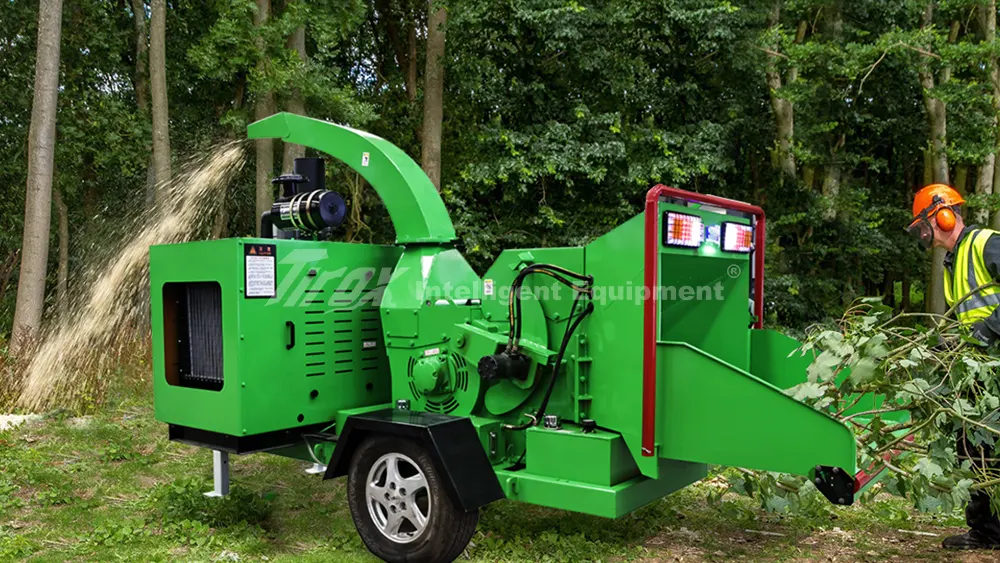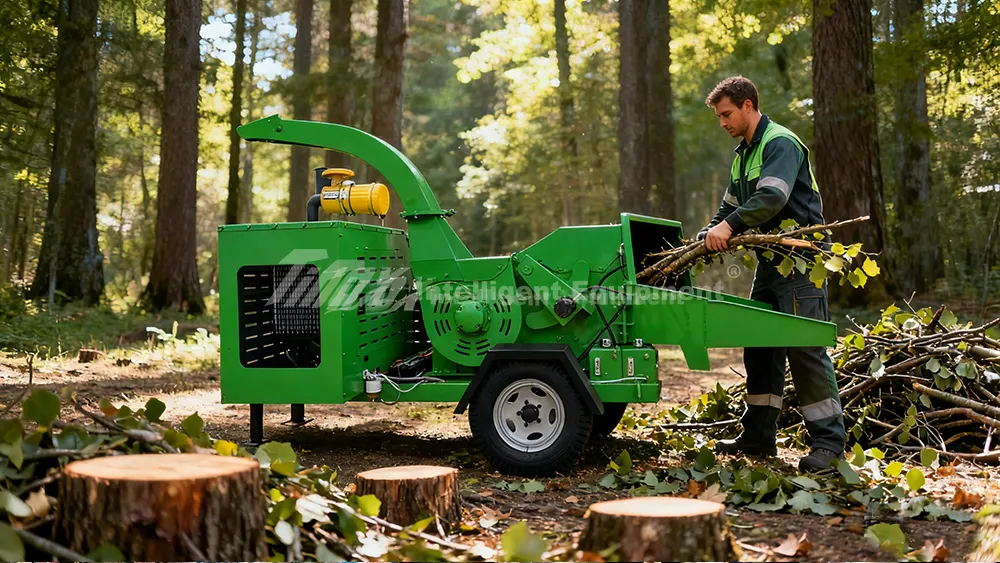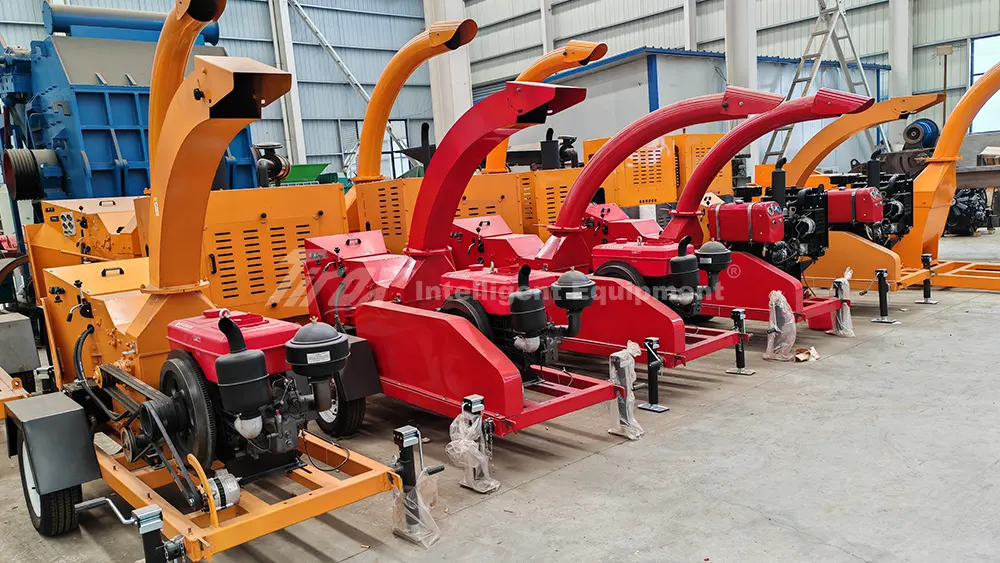Struggling with your wood chipper’s efficiency? It could be due to the feeding mechanism.
Understanding the feeding mechanism of your wood chipper is crucial for optimizing performance. Different types, such as manual, hydraulic, and mechanical roller feeds, cater to various operational needs.
Let’s dive deeper into how these mechanisms work and their impact on your wood recycling tasks.
What Are the Different Types of Feeding Mechanisms in Wood Chippers?

Did you know that the type of feeding mechanism can significantly affect your wood chipper’s efficiency?
Wood chippers generally use three types of feeding mechanisms: manual feed, hydraulic feed, and mechanical roller feed. Each has its own set of benefits and is suitable for different types of wood processing jobs.
In manual feed systems, operators physically push the wood into the chipper. This type is more labor-intensive but allows for greater control over the speed and size of the feed. Hydraulic feeds use a powered mechanism to pull the material into the chipper, providing consistent feed rates and reducing manual labor. Mechanical roller feeds leverage rollers to draw the wood into the machine, which enhances the chipper’s ability to handle larger volumes efficiently.
How Does the Hydraulic Feed Enhance Wood Chipper Performance?
Ever wonder why many professionals prefer hydraulic feed wood chippers?
Hydraulic feed mechanisms are a game-changer in wood chipping operations, especially when handling varied material sizes. They adjust the feeding speed automatically, ensuring optimal performance and higher throughput.
Hydraulic systems are particularly effective because they can adapt to the size and hardness of the wood, preventing jams and minimizing downtime. This adaptability makes them ideal for commercial operations where different types of wood waste are processed daily. The system uses hydraulic motors and controls to manage the feed rate, which can be finely tuned according to the specific requirements of the job, leading to better fuel efficiency and less wear on the chipper’s blades.

What Should You Consider When Choosing a Wood Chipper Based on Feeding Mechanism?
Choosing the right wood chipper isn’t just about the price tag; it’s about the feeding mechanism too.
Selecting the appropriate feeding mechanism for your wood chipper can dramatically affect your operational efficiency. Consider the volume of wood, type of material, and desired chip size.
Manual feed chippers are more cost-effective and simpler to maintain but require more labor. They’re suitable for smaller volumes and where the operator’s control over the feeding process is crucial. Hydraulic and mechanical roller chippers are better suited for larger operations where efficiency and speed are priorities. These mechanisms help streamline the chipping process, allowing for continuous operation with less manual intervention. Always assess the typical wood sizes and types you deal with before deciding, as this will guide you towards the ideal mechanism for your needs.
Conclusion
Choosing the right wood chipper feeding mechanism is crucial for operational efficiency and job quality.






